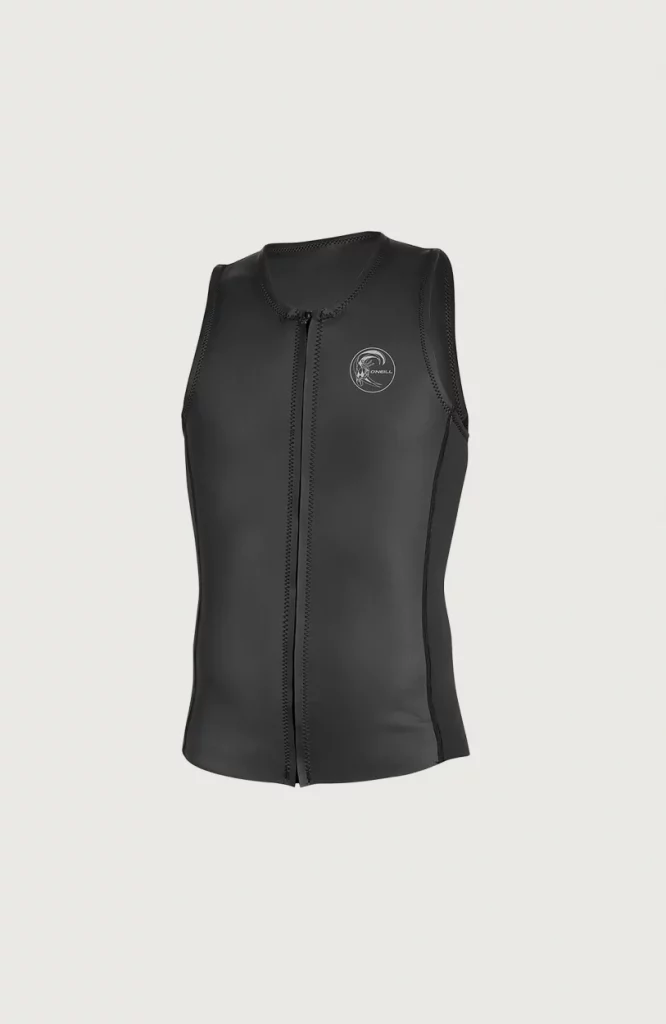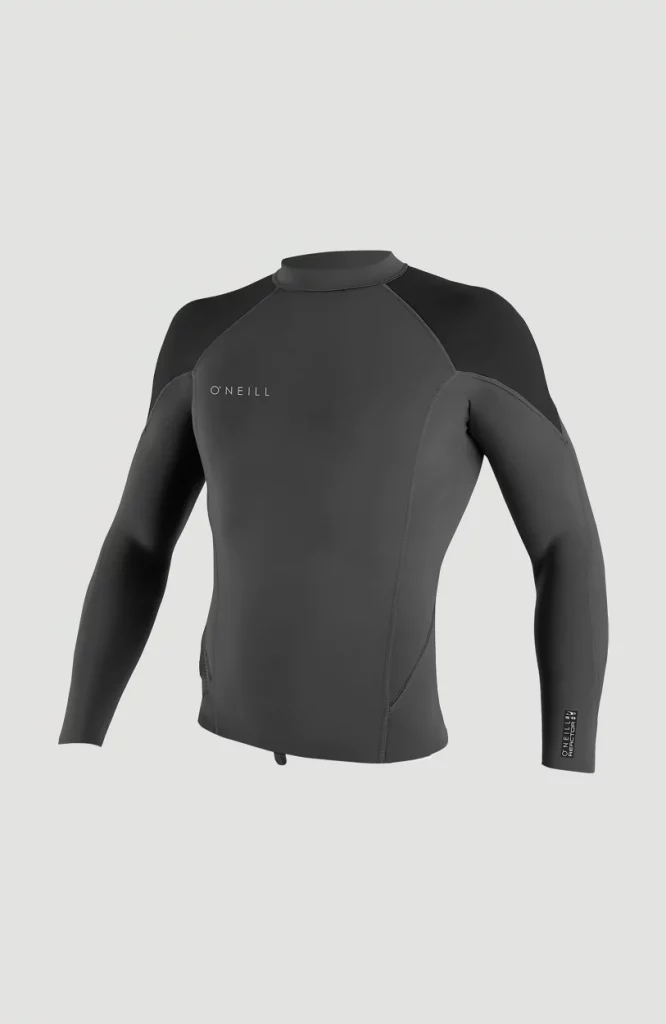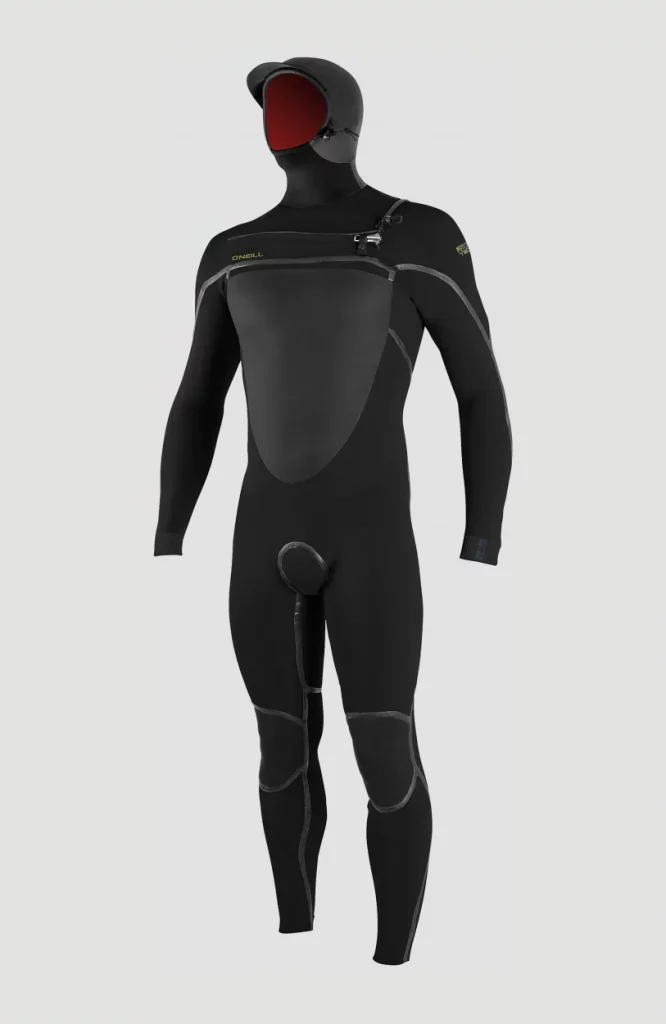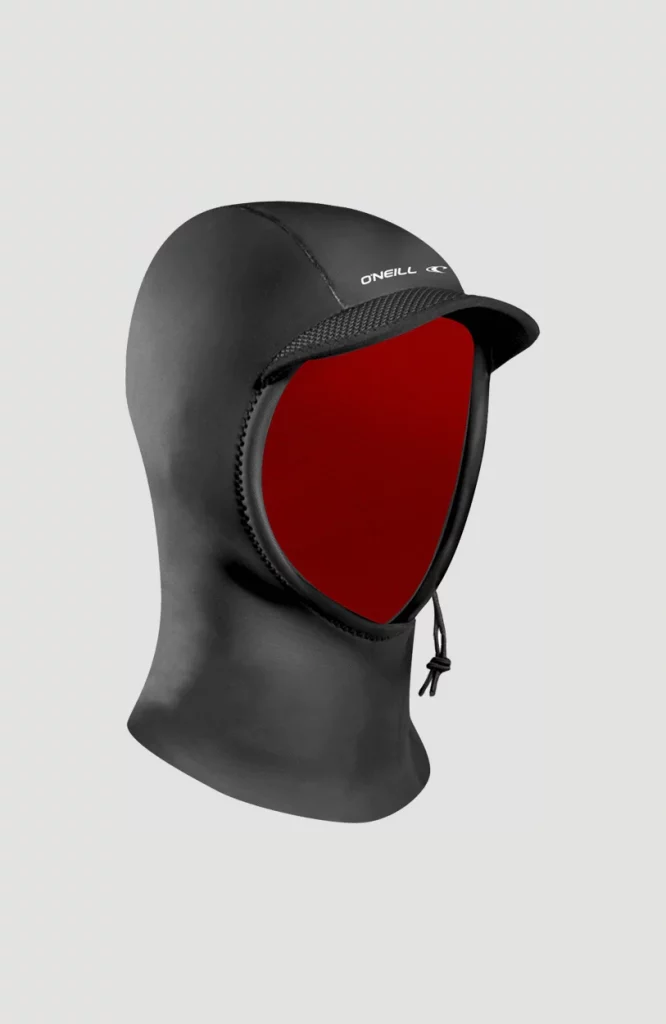- Written by Emilia
- Published on: February 1, 2024
- Updated on: December 13, 2024
Post contents
Affiliate disclaimer
This post contains affiliate links. If you click on one of these links and make a purchase, I may earn a commission at no additional cost to you.
Full website disclaimer accessible here.
Introduction
Central to your surfing equipment is the wetsuit. Choosing the right wetsuit for surfing is important to make sure you stay warm and safe. You should consider wetsuit style, thickness, and size & fit- all of which we will go through in this lesson.
Do you need a wetsuit to surf?
In colder water temperatures, a wetsuit becomes essential for maintaining body warmth. Prolonged exposure to cold water without proper insulation increases the risk of hypothermia and can be uncomfortable. Wetsuits provide thermal protection, allowing you to enjoy the waves in colder climates. In warmer seasons or tropical locations however, you can opt for lighter wetsuits or rash guards or even surf without one, depending on your personal preference.
Wetsuits not only provide thermal insulation but also act as a protective layer against elements like wind, UV rays, and potential irritants in the water. They can also prevent skin abrasions caused by contact with the surfboard. For that reason, personal preference also plays a role in whether you want to wear a lighter wetsuit or rash guard also in warmer seasons or tropical locations.

What to consider when choosing a wetsuit for surfing
1. Wetsuit style
The style of wetsuit you choose depends on the season and your personal preference. Full suits are ideal for colder temperatures, covering the entire body. Shorties, on the other hand, provide less coverage and are perfect for milder conditions. Short arm/long leg suits and vice versa offer a compromise between the two, providing some warmth while allowing more freedom of movement.
2. Wetsuit thickness
What wetsuit thickness you should opt for when choosing a wetsuit for surfing is crucial and depends on the water temperature of your surfing location. Wetsuits are measured in millimeters, with a range typically from 1mm to 6mm. In warmer waters, opt for a thinner wetsuit, while colder conditions require thicker insulation.
Common thickness options are 1mm, 2mm, 3/2mm, 4/3mm, 5/4mm, 6/4mm, and 6/5/4mm. The “/” notation in wetsuit thickness refers to the varying thickness of neoprene material in different parts of the wetsuit. Neoprene is a type of synthetic rubber commonly used in wetsuit construction due to its insulating properties and flexibility.
First number (before the slash): This number indicates the thickness of the neoprene in the torso or core area of the wetsuit. A higher number means thicker neoprene in this region, providing better insulation for the body’s vital organs. Thicker material in the core helps to retain more heat in colder water.
Second number (after the slash): This number represents the thickness of the neoprene in the arms and legs of the wetsuit. Thinner neoprene in these areas allows for greater flexibility and ease of movement. The arms and legs require less insulation compared to the torso, and thinner material ensures that the wearer can move freely.
For example:
- A wetsuit labeled as “5/4 mm” would have 5mm neoprene in the torso and 4mm neoprene in the arms and legs.
- A wetsuit labeled as “3/2mm” would have 3mm neoprene in the torso and 2mm neoprene in the arms and legs.
This combination of different thicknesses is a compromise between providing adequate insulation for warmth and allowing sufficient flexibility for comfortable movement. It allows you to stay warm in cold water while still being able to move freely during surfing.
3. Wetsuit size & fit
The right size & fit is paramount when choosing a wetsuit for surfing. A snug fit ensures that the wetsuit effectively traps water and creates a thermal barrier. Pay attention to the neck, wrists, and ankles to prevent water flushing in and out of the suit. Many brands offer different sizing charts, so take your measurements and consult these charts for the best fit.
General wetsuit temperature guide
|
Water temperature
|
Recommended wetsuit*
|
|---|---|
|
26+ ℃
|
Rash vests or UV T-shirts
|
|
21℃ - 25℃
|
1 mm wetsuits
|
|
18℃ - 20℃
|
2mm wetsuits or shorty
|
|
12℃ - 17℃
|
3/2mm wetsuits or 4/3mm wetsuits
|
|
8℃ - 11℃
|
4/3mm wetsuits or 5/4mm wetsuits
|
|
4℃ - 7℃
|
5/4mm wetsuits or 6/5mm wetsuits
|
|
Below 3℃
|
7+ mm wetsuits
|
*Chart recommendations are based on recommendations from O’Neill’s wetsuit guide. Wetsuit suitability may vary based on your weight, level of activity, and the outside temperature.
Wetsuits from one of the best wetsuit brands for surfing: O'Neill
When it comes to conquering the waves with style and comfort, there are a couple of brands that stand out as the best wetsuit brands for surfing. Known for their commitment to quality and a rich history deeply rooted in surf culture, they consistently deliver quality wetsuits for surfing that cater to the needs of surf enthusiasts. Some of the most popular and best wetsuit brands for surfing include O’Neill, Rip Curl, Billabong, Roxy, Quicksilver, and Hurley. In this section we explore some different types of wetsuits for surfing from O’Neill.
Rash vests and UV T-shirts
When the waves beckon under the blazing sun, lighter alternatives like rash vests and UV T-shirts become the go-to choice. Offering protection from both the sun’s rays and potential skin irritations, these garments provide surfers with a comfortable and stylish option for warmer conditions. They’re suitable for 26+ °C water temperatures*.
2mm wetsuits (shortys)
Shorty wetsuits, characterized by their 2mm thickness, strike the perfect balance between coverage and freedom. Ideal for moderate temperatures, these wetsuits keep you warm while allowing flexibility for unrestricted movement, making them a popular choice for those seeking a versatile and agile surfing experience. They’re suitable for 18-20 °C water temperatures*.
3/2mm wetsuits
The 3/2mm wetsuit has varying thickness in the torso and limbs. This type of wetsuit offers ample insulation for the core while providing flexibility in the arms and legs. It’s suitable for 12-17 °C water temperatures*.
4/3mm wetsuits
As temperatures drop, the 4/3mm wetsuit steps in to provide enhanced insulation. With thicker neoprene in the core and slightly less in the limbs, this wetsuit ensures warmth in cooler waters without sacrificing the freedom of movement necessary for an enjoyable surfing experience. It’s suitable for 8-17 °C water temperatures*.
5/4mm wetsuits
When winter brings colder waves, the 5/4mm wetsuit becomes a reliable companion. Featuring increased thickness in both the torso and limbs, this wetsuit offers robust insulation, keeping you comfortably warm in chilly conditions. It’s suitable for 4-11 °C water temperatures*.
6/4 and 6/5/4 mm wetsuits
For the most frigid waters, the 6/4 and 6/5/4mm wetsuits come equipped with extra neoprene thickness. Designed to tackle extremely cold conditions, these wetsuits provide top-tier insulation, especially in critical areas like the torso and hood. Surfing enthusiasts facing icy waters can trust these wetsuits to keep them warm and protected during their winter sessions. They’re suitable for 4-7 °C water temperatures*.
Wetsuit accessories
Beyond the core wetsuit for surfing, wetsuit accessories add functionality, comfort, and personalization to your aquatic adventures. From hoods and gloves designed to combat the chill of winter waves to booties offering traction and protection, wetsuit accessories cater to the nuanced needs of surfers in various conditions.
*Wetsuit suitability may vary based on your weight, level of activity, and the outside temperature
Lesson quiz: test your knowledge

Time's up
I’d love to hear your thoughts on this post! Whether you have suggestions for improvement, want to share what you liked, or have any questions, feel free to leave a comment below. Your feedback helps me create better content for all aspiring surfers!






























